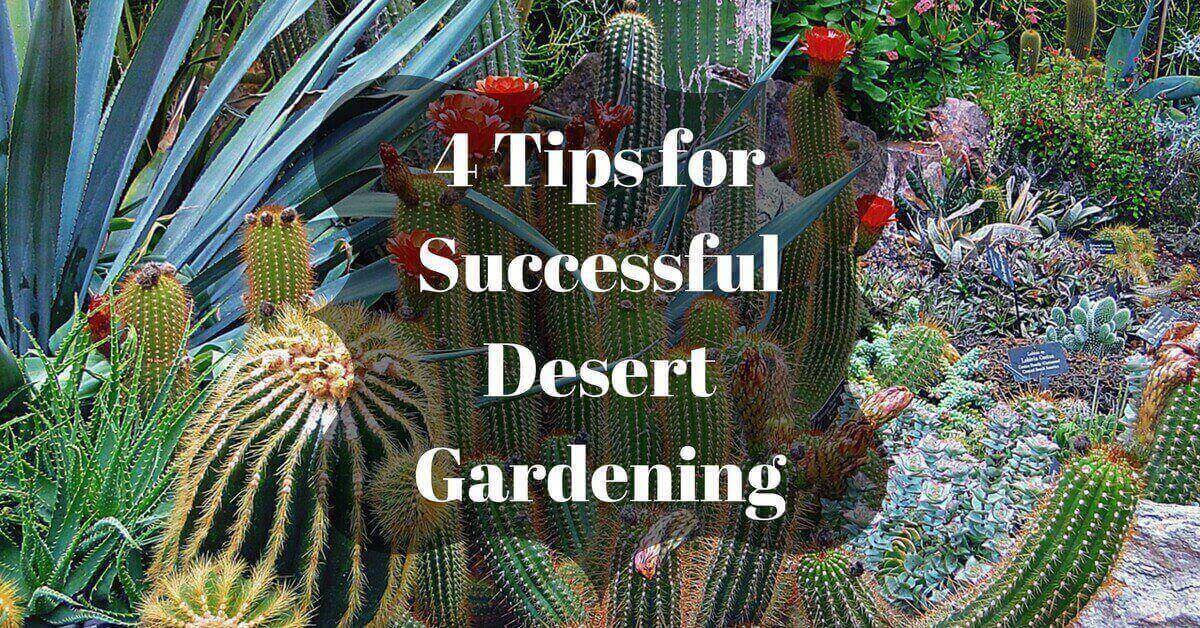- Finding the Right Indoor Plants for Desert Your Home - April 28, 2023
- Common Misunderstanding About Sun Exposure - April 18, 2023
- All about the Arizona Monsoon Season - May 21, 2021
While breathtakingly beautiful, Arizona scenery is not known for it’s lush green plants and gardens. So much so that more and more Arizonians are choosing Astroturf or rock landscaping over genuine grass in their front and back yards. Just because our summers are hot and our landscape is desert, doesn’t mean you can’t enjoy a beautiful garden here in Arizona. We’ve compiled this list of tips and suggestions to help you create the garden of your dreams.
Tip #1: Don’t Follow Gardening Tips
This might seem counterintuitive, however, general gardening advice will almost certainly lead you down a path to dead plants quickly if attempted in the desert. Every step of the gardening process – from choosing what and when to plant through to fruition – require a unique approach in desert climates. Throw out your current gardening guides and switch to one targeted for hot and dry climates such as George Brookbank’s “Desert Gardening” (found here: https://www.amazon.com/Desert-Gardening-Fruits-Vegetables-Complete/dp/1555610021 ) or Gary Paul Nabhan’s “Growing Food In Hotter Dryer Land”. (found here: http://www.chelseagreen.com/growing-food-in-a-hotter-drier-land).
Tip #2: Choose the Right Plants
Some fruits, vegetables, and herbs do surprisingly well in the Phoenix heat. For all veggies and herbs – be sure to look for “short season” or “drought resistant” varietals. While intended to fruit before winter in extremely cold temperatures, they have the same effect in Arizona – peaking before summer is in full swing.
Vegetables
Some vegetables that do really well in the desert are artichokes, broccoli, chilies, peppers, eggplants and spinach. Artichokes, spinach and eggplant can even survive through the summer, while the other veggies listed must be re-planted each Fall. Unfortunately, some vegetables such as tomatoes are just extremely difficult to grow in the desert heat and will take a lot of maintenance to upkeep.
http://www.phoenixtropicals.com/vegetables.html
Fruit
Some fruits absolutely thrive in a desert climate such as orange, lemon, and grapefruit trees. Grapes, pomegranates, olives, and melons also do extremely well here in the desert, however, it is important to keep the white flies from attacking them. Fruits that are frustrating to plant are strawberries and blueberries – once they finally fruit, the desert sun becomes too hot for them and they quickly die.
Herbs
Most herbs are relatively easy to grow in Arizona. Oregano, sage, chamomile, and lavender are pretty much “plant and go” in a desert climate. Some herbs – such as dill and rosemary are even considered weeds and may show up in your garden whether you planted them or not!
Local Plants
Look beyond tomatoes and radishes when looking to start a desert garden. There are some very useful, tasty and beautiful plants that absolutely thrive in a desert climate. Growing fresh aloe plants adds an interesting visual pop to your garden and can also be used to heal sunburns and irritations. Prickly pear cactus plants are colorful and pleasant to eat. Their high sugar content makes them an interesting addition to a summer salad or can be turned into healthy candy for the kids. There are also many vibrant flowers and trees that love the desert heat.
Tip #3 Build Your Own Soil
Desert soil needs some TLC (tender loving care) to become an oasis for garden plants. Its overabundance of salt and lack of other organic nutrients can make it a difficult place to grow. To help your desert soil, it needs to be mulched often. Mulch is any material that is spread over a soil to maintain moisture, keep the soil cool and prevent the growth of weeds. In a desert climate, it is a good idea to line your soil with a thick layer of straw. Interestingly enough, straw holds a significant amount of moisture and when it breaks down, will add important nutrients to your garden. Manure based mulches are less successful in desert climates because they can burn in the hot sun.
Tip #4 Start Composting
Composting your leftover food will not only lessen your carbon footprint, but will also help your garden plants to thrive. It is important to keep your compost in an airtight container to prevent it from losing its moisture. Placing your compost directly under the sun’s heat will help to further speed the process.
Take a break from gardening in the sun with patio shades! Contact us at CC Sunscreens today for a consultation.

